A Day on the Ship
By popular request, here’s a look at my typical day. On the ship, work is 24 hours a day so we work in 12 hour shifts: 12am to 12 noon or 12noon to 12am. (the crew have a slightly different rotations). My shift is noon to midnight. I usually get up around 10am and make use of the workout room. It’s really interesting to run on a treadmill that moves beneath you.
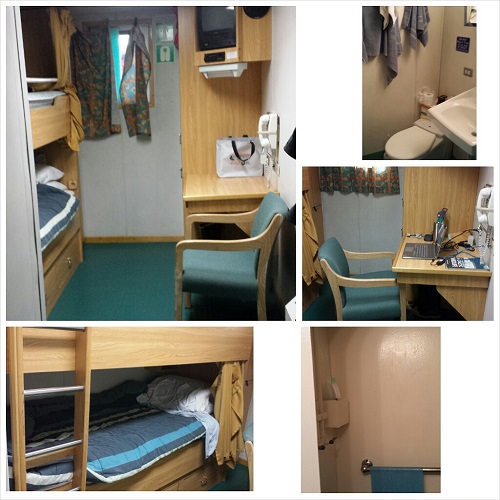 A closer look at the comfortable cabins on the NBP.
A closer look at the comfortable cabins on the NBP.
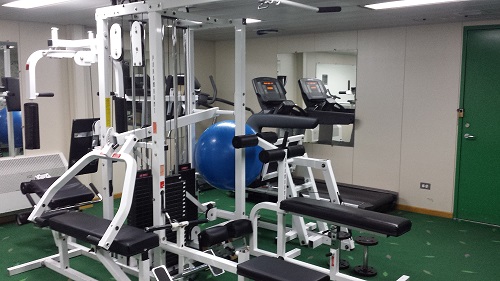 The workout room on the NBP.
The workout room on the NBP.
I miss the official breakfast (only served 7:30am to 8:30am), but after running, doing chores like laundry or cleaning my room and getting ready for the day it’s time for me to grab lunch (served 11:30am-12:30pm) for my “breakfast” just before my shift starts at noon. Then I make the commute of 56 steps, including stairs, from my room to the lab (it’s a few more steps in high seas).
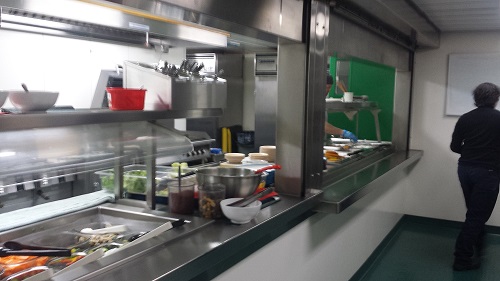 The food service area on the NBP.
The food service area on the NBP.
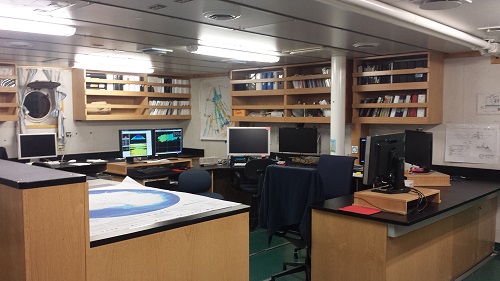 The dry lab of the NBP, where we spend most of our time working for this cruise.
The dry lab of the NBP, where we spend most of our time working for this cruise.
Most people have one specific area of responsibility for their whole shift. I’m lucky to have a split shift. From noon to 6pm I help whatever science is going on for the day. I can assist with CTDs or cores or drone flights. Or I can make observations (and take photos) from the bridge or help catalogue and clean up distortions from data collected so far.
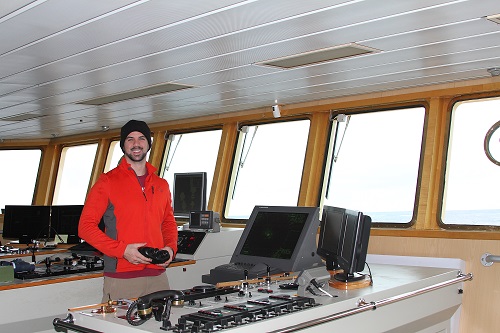 Third Mate Brian Tweedy on the bridge of the NBP, piloting the ship.
Third Mate Brian Tweedy on the bridge of the NBP, piloting the ship.
Then it’s time for dinner from 5:30pm to 6:30pm. After dinner I take my turn monitoring the multi-beam bathymeter. I have to ensure it's collecting data at the proper depth and that we’re not getting too much distortion from the ice. During this time I also edit data taken by the multi-beam earlier in the day, cleaning up any distortion. I do this until midnight when the next shift comes to relieve me.
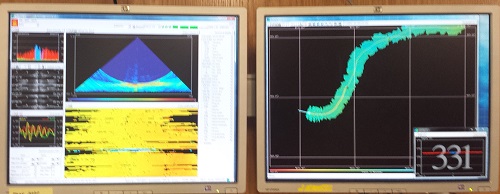 Collecting data on the topography of the ocean floor.
Collecting data on the topography of the ocean floor.
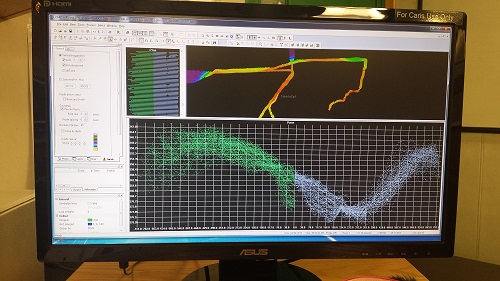 Cleaning up distortions, usually caused by ice, in data collected on the topography of the ocean floor.
Cleaning up distortions, usually caused by ice, in data collected on the topography of the ocean floor.
If I’m hungry when I get off work, I can grab Midrats (short for Midnight rations, which is kind of like second dinner in the middle of the night) served from 11:30pm-12:30am. Then it’s time to relax or read for a bit then sleep before repeating it all the next day.
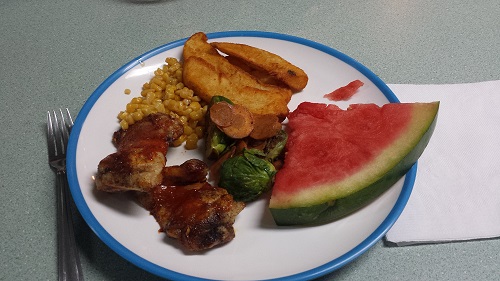 There's a lot of good food on the ship.
There's a lot of good food on the ship.
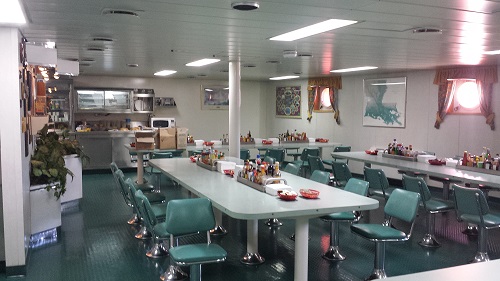 The galley of the NBP, where we all eat our meals.
The galley of the NBP, where we all eat our meals.
Since we are collecting data seven days a week, there are no “weekends.” I think I distinguish my weeks from one another by our weekly Friday fire drill. Even though there are no weekends, there are still fun things going on around the ship. We currently have a ping pong tournament going on, and you play your bracket when everyone finds a little free time. We also occasionally have movie nights or birthday parties.
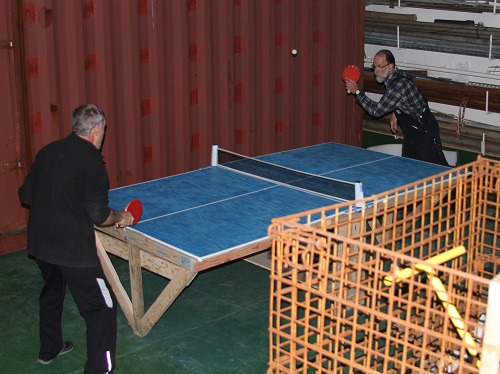 We're having a ping pong tournament on the NBP! Raul and George play a practice round in the cargo hold.
We're having a ping pong tournament on the NBP! Raul and George play a practice round in the cargo hold.
The midnight to noon shift has a similar work pattern, just with a different timeframe. Usually waking up around 10 or 11pm, grabbing Midrats for “breakfast” and then working until noon (with a break for breakfast for their “lunch”) when we relieve them. Then they have lunch for “dinner” and relax, use the sauna or workout room and head to bed in the afternoon.
There are lounges on the ship where we can watch movies and a “library” of books left behind for us to browse through (most people bring their own digital books or movies). They even have a ping pong table and foosball table to use. Although there are computers, we have very limited email and internet. No Facebook or Reddit for me (someone else is posting my blogs to Facebook for me while I'm gone). We use a ship intranet to communicate with each other on board. I tend to spend a lot of my free time up on the bridge or out on the weather decks looking for wildlife or writing these blogs.
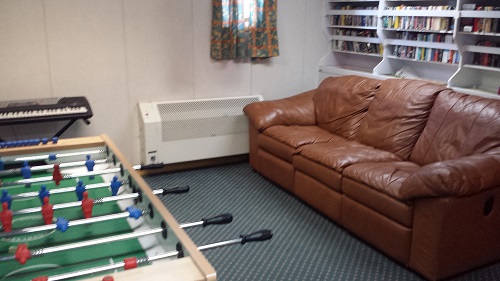 There are two lounges on the ship where we can hang out, play games, read, or watch movies.
There are two lounges on the ship where we can hang out, play games, read, or watch movies.
There is plenty of good food and the cooks—Mike, Michael, and Lorenzo—make sure we’re well fed. There are also always snacks, like popcorn, nuts, and juice boxes out. They have peach juice! I haven’t had this many juice boxes since kindergarten.
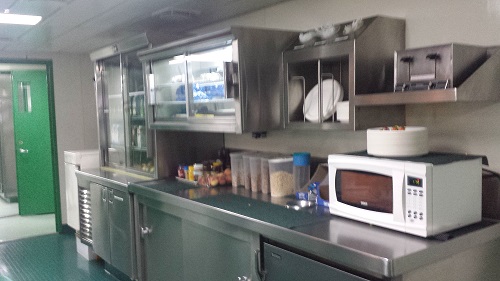 There are always lots of snacks available for us to eat when it's not meal time.
There are always lots of snacks available for us to eat when it's not meal time.
The ship, support staff, and crew make sure we have everything we could need. We’re doing science in style.


Comments